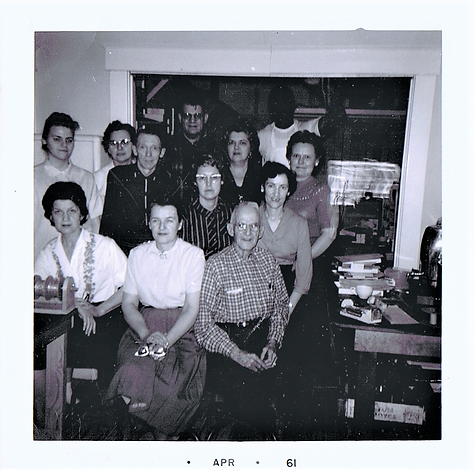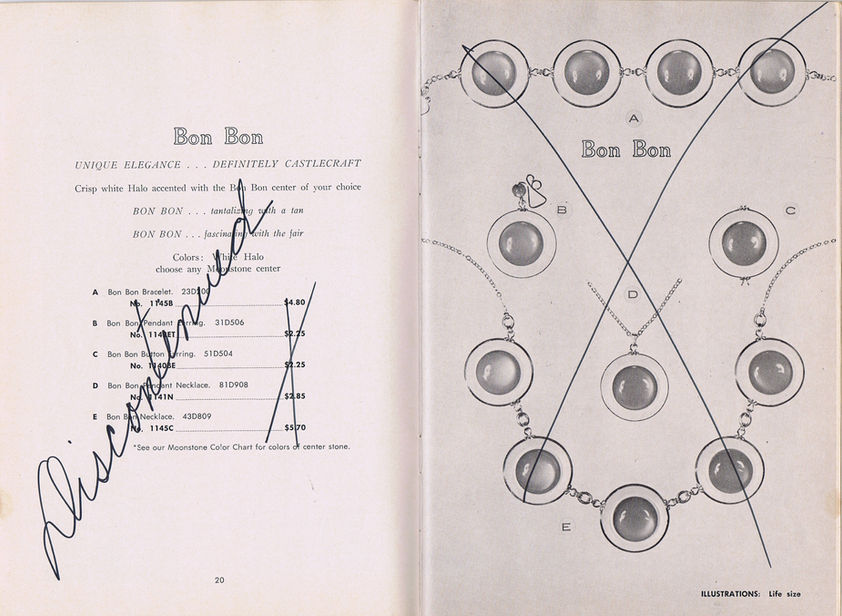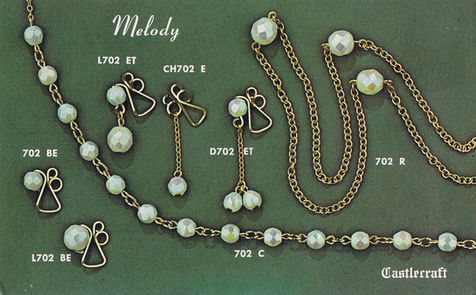
Putnam County Museum


A Handcrafted History
Castlecraft
Jewelry
The Castlecraft Jewelry story begins with the story of Charles Ellis. A graduate of Greencastle High School, Charles underwent a 10 year period of hospitalization for Tuberculosis after spending one year in college. During his time in the Rockville, Indiana Sanatorium in the 1950's, he learned the art of wire wrapping alongside Alan Chamberlain and Bill May, turning this talent into a lucrative jewelry business with the help of fellow patients and staff. The jewelry created at the sanatorium was made under the name 'Hillcraft'.
After being discharged and returning home to Greencastle, Indiana, Charles continued to use these skills by creating his own jewelry company, choosing the name ‘Castlecraft’. Ellis, Chamberlain, and May remained friendly, often sharing designs, parts, and during busy times, even employees. Many pieces of Hillcraft and Castlecraft jewelry are nearly impossible to tell apart.
Mr. Ellis directed his staff in the making of earrings, neckpieces, arm ornaments, tie holders and many other affordable jewelry items. Simplicity of design characterized Castlecraft Jewelry. The high quality costume jewelry featured glass stones, beads, imitation jewels, and Swarovski crystals, and was entirely handcrafted.
Click image to view in full-screen.
"Classic Beauty in Gold
Quality to be proud of
original in design
styled for lasting beauty
craftsmanship impossible to duplicate by machines"
-1964 Castlecraft Jewelry catalog
Castlecraft Jewelry couldn't be found in stores- it was sold through clubs, sororities, or as fundraisers. Sales representatives would collect orders from their customers before mailing them to the Castlecraft headquarters, using the following catalogs, Colorcharts, and Colorcards to showcase the variety of jewelry.
Flip through a Castlecraft catalog used by sales representatives.
Click image to view in full-screen.
colorcharts
Castlecraft Jewelry catalogs were printed in black and white, making it difficult to visualize the color and details of the pieces. Color Charts (shown below) were one solution to this problem. Created for the large and extensive Castlecraft lines, they were sent to sales representatives alongside the catalogs.

colorcards
Colorcards, used exclusively after 1964, were another answer to a black and white catalog. The cards were intentionally left unbound, so that sales representatives could pass them out individually.
the castlecraft team
Charles Ellis was committed to encouraging and employing members of the community with physical handicaps. He was well known in Greencastle, and throughout Putnam County, for being a kind man who took pride in the work he and his team did. He remarked: "Each piece of jewelry that we turn out... everyone of us... is NOT a factory product, but rather the finished work of art, the end result of skill and the intense desire to fashion something that is valuable".

Castlecraft employees, April 1961.
Back Row, L-R
Charles Ellis
Richelieu Harris
Middle Row L-R
Wanda Hash
Peg Baumunk
Lamar Cooper
Fern Proctor
Betty
Flossie Zeiner
Maybelle Rice
Front Row, L-R
Margaret Colby
Betty Ellis
Mr. Davis (Betty's Father)
employees hand-assembling jewelry, January 1960.
Flossie Zeiner
Fern Proctor
Phyllis Brackney
Maybelle Rice
"Castlecraft products all have a personal touch. There is no noisy machinery to be heard. Workers sit at tables and with hand tools designated for specific uses, they perform the many operations needed to turn out finished items". The Daily Banner, October 16th, 1958

castlecraft jewelry designs
While Castlecraft produced jewelry for those with pierced ears, they were most well known for their 'slip-on' style of earrings. Created out of a loop of gold filled wire, these earrings were designed to slip onto the earlobe and give the look of a pierced ear, with none of the pain associated with typical 'clip-on' style jewelry. Most earring designs were also available in the form of a necklace or bracelet.

1962 fire
On Monday, February 19th, 1962, the 6 room home (located at 320 Bloomington Street in Greencastle, Indiana) that had been converted into the 'House of Castlecraft' was completely gutted after a fire broke out near the furnace. The fire was first reported by Marian Gifford, the sister of owner Charles Ellis, who lived nearby. It took firefighters over three hours to put out.
Less than 3 days after the tragedy, Charles and his wife, Betty, travelled to Attleboro, Massachusetts ("the gold jewelry center of the USA", wrote Charles) to speak with members of the Gold-filled Manufacturer Association, as well as their chain supplier, gold wire maker, scrap gold refiner, and stone manufacturer. With the combined experience and knowledge of these contacts, it was decided that any items containing gold were a complete loss. The building had to be razed, as it was completely contaminated by smoke and fumes.

castlecraft today
Castlecraft quickly recovered after the 1962 fire, continuing to provide high quality, handcrafted jewelry nationwide for 11 more years. Production ceased in 1973, but pieces continue to prove popular online, can often be found at Putnam County yardsales, and are frequently sported by ladies going to Sunday morning church services. Many have fond memories of the Castlecraft Jewelry Company, whether they were employed by Charles Ellis, sold jewelry as sales representatives, or received pieces as gifts.
For more information on Hillcraft Jewelry: https://www.hoppersbazaar.com/JJ/jj.html



















































